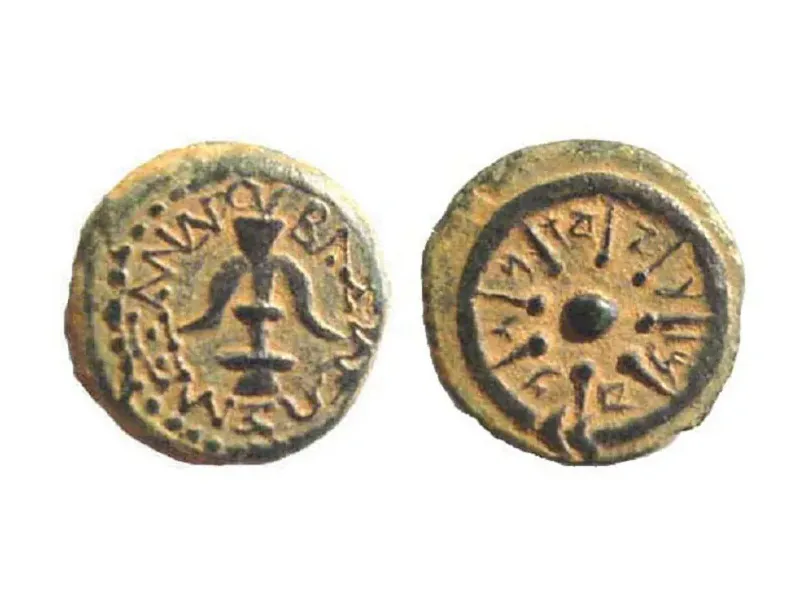The Widow’s Mites: Archaeological Evidence Illuminates the Gospel Story | Danny The Digger (original) (raw)
The Widow’s Mites: Archaeological Evidence Illuminates the Gospel Story
The widow’s mites account, found in Mark 12:41-44 and Luke 21:1-4, presents one of the most profound teachings on giving in the New Testament. The story takes place at the Jerusalem Temple, where Jesus observes various individuals making their offerings. Among the donors are wealthy people contributing substantial sums. However, Jesus’s attention is drawn to a poor widow who places two small copper coins, known as mites or lepta, into the treasury.
The narrative reaches its climax when Jesus gathers his disciples and declares that this destitute widow has given more than all the others combined. He explains that while the wealthy donated from their abundance, the widow offered “all she had to live on.” This statement transforms the seemingly insignificant gift into a powerful testament of faith and sacrifice.
This brief yet profound narrative continues to challenge readers to examine their own attitudes toward giving, faith, and the true measure of generosity. Through the centuries, the term “widow’s mite” has become synonymous with gifts that, though small in worldly terms, represent extraordinary sacrifice and faith.
The Numismatic Evidence
The widow’s mites referenced in the Gospels have been a subject of numismatic study, providing fascinating historical context to this biblical account. The “mite” (“lepton” in Greek) was the smallest bronze coin in circulation in Judea during the time of Jesus. Numismatic evidence shows these coins were typically minted during the reign of Alexander Jannaeus (103-76 BCE) and continued to circulate well into the first century CE when this Gospel event took place.
 These coins typically measured about 10-15mm in diameter and weighed roughly 1.5-2 grams. The coin featured an anchor on one side and an eight-rayed star on the other. The anchor was possibly a symbol of the Hasmonean dynasty, while the star may have represented divine authority.
These coins typically measured about 10-15mm in diameter and weighed roughly 1.5-2 grams. The coin featured an anchor on one side and an eight-rayed star on the other. The anchor was possibly a symbol of the Hasmonean dynasty, while the star may have represented divine authority.
The coins were so small and of such low value that they were often crudely struck, with many examples showing incomplete designs or off-center strikes.
The Buying Power of the Widow’s Mites
In terms of buying power, historical and archaeological evidence suggests that two leptons (the amount the widow gave) would have been worth about 1/64 of a denarius, a Roman silver coin that represented a day’s wages for a laborer. This context makes the widow’s sacrifice even more poignant – she gave what might have bought her a small portion of bread or a few drops of oil, truly representing her entire livelihood as the Gospel accounts state.
Buying a geniune “Widow’s Mite” Coin
If you are considering purchasing a genuine “Widow’s Mite” coin, we recommend zak’s Shop in Jerusalem. And wheather you buy it at the shop or online, mention promotion code “digger” to get a %5 reduction 🙂
Some Final Thoughts
The widespread circulation of these small bronze coins throughout Jerusalem and Judea, evidenced by archaeological finds, confirms the historical accuracy of the Gospel narrative. These coins were indeed the currency of the poor, and their presence in the Temple treasury would have been common, though their value was minimal compared to the larger denominations given by wealthy donors.
Contact us to inquire more about a private tour in Israel:
Keep Exploring
Related Tours
Best Private Tour of Jerusalem!
To the Holiest City In the World
Private Tour to Masada and the Dead Sea
Exploring Desert Splendors
Jaffa and Tel-Aviv Private Tour
A Captivating Tour of Sites and Flavors


